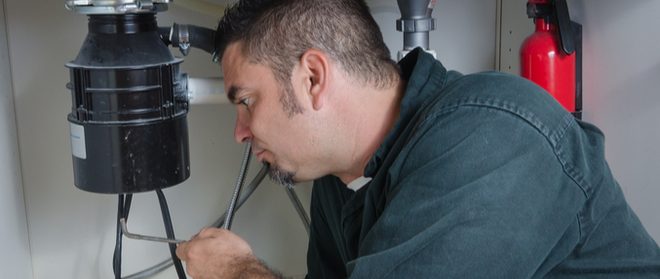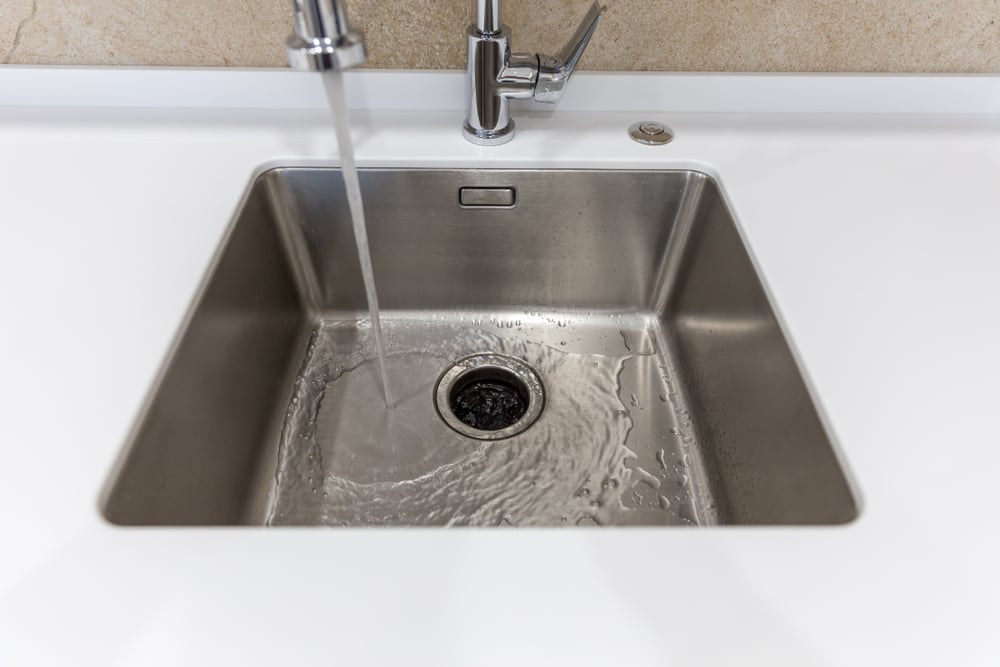Tested Ways to Fix a Leaking Waste Disposal Unit
Tested Ways to Fix a Leaking Waste Disposal Unit
Blog Article
They are making a number of good observations on Why Is My Garbage Disposal Leaking From the Bottom? in general in this content further down.

Garbage disposals are essential kitchen devices that aid in taking care of food waste efficiently. Nonetheless, a dripping garbage disposal can be an aggravating and unpleasant trouble to deal with. Thankfully, several leaks can be taken care of quickly with a couple of straightforward steps. In this short article, we will review how to repair a dripping garbage disposal properly.
Intro
Garbage disposals are mounted under kitchen area sinks and are developed to shred food waste right into smaller pieces, allowing it to go through the plumbing system easily. While these tools are usually dependable, leakages can take place over time due to damage, loosened connections, or damages to the device.
Common Sources Of Leaks in Garbage Disposals
Worn Seals and Gaskets
Seals and gaskets play an essential role in preventing water from leaking out of the garbage disposal. In time, these elements can weaken, resulting in leakages around the disposal device.
Loose Connections
The connections between the garbage disposal and the pipes system can come to be loosened with time, creating water to leak out during operation.
Cracks or Holes in the Disposal System
Physical damages to the waste disposal unit, such as splits or openings in the real estate, can additionally result in leakages.
Identifying the Resource of the Leak
Prior to attempting to repair a leaking waste disposal unit, it is important to recognize the resource of the leakage. This can commonly be done through aesthetic examination or by carrying out straightforward examinations.
Visual Inspection
Examine the garbage disposal device meticulously for any type of indications of water leak. Pay close attention to areas around seals, gaskets, and connection points.
Testing for Leaks
One way to test for leaks is by running water with the disposal device and looking for any noticeable signs of leakage.
Devices and Products Needed for Fixing a Dripping Waste Disposal Unit
Prior to starting the repair process, gather the needed tools and materials, including a screwdriver, flexible wrench, plumber's putty, substitute seals or gaskets, and epoxy or patching material for repairing cracks or holes.
Step-by-Step Guide to Fixing a Dripping Garbage Disposal
Switch off the Power
Before attempting any repairs, make sure that the power to the garbage disposal system is switched off to stop the danger of electrical shock.
Find the Leak
Recognize the precise location of the leakage and figure out the reason.
Tighten Connections
Utilize a wrench to tighten any kind of loosened connections between the disposal system and the plumbing system.
Change Seals or Gaskets
If the leak is because of used seals or gaskets, get rid of the old components and change them with new ones.
Patching Splits or Holes
For fractures or holes in the disposal system, usage epoxy or an ideal patching product to secure the broken area.
Testing the Garbage Disposal After Repair
As soon as the repair work is total, evaluate the waste disposal unit by running water via it to guarantee that the leak has been solved.
Preventive Maintenance Tips to Stay Clear Of Future Leakages
To stop future leaks, it is vital to execute regular upkeep on your garbage disposal. This includes keeping it tidy, avoiding placing non-food items or difficult objects down the disposal, and occasionally checking for leakages or other issues.
Conclusion
In conclusion, taking care of a leaking waste disposal unit is a reasonably simple procedure that can be finished with basic tools and products. By complying with the steps laid out in this post and exercising preventative maintenance, you can keep your waste disposal unit in good working condition and stay clear of pricey fixings in the future.
HERE’S HOW TO FIX YOUR GARBAGE DISPOSAL
WHAT TO DO IF SOMETHING IS STUCK IN YOUR GARBAGE DISPOSAL
If the impeller won’t turn, there’s probably something stuck in the disposal. It could be a steak bone or peach pit, although plumbers report pulling all sorts of inappropriate objects out of disposals, such as bottle caps or aluminum foil. Make sure power to the disposal is off, and look inside to see if you can see the source of the jam.
Never stick your fingers in a disposal. Pull out anything you see with tongs or pliers.
If the disposal still won’t work, it may be time to call a plumber or consider buying a new disposal. GEM Plumbing & Heating is here for all of your garbage disposal needs.
WHAT TO DO IF YOUR GARBAGE DISPOSAL DRAIN IS CLOGGED
Take everything out from underneath your sink and put a bucket or other container under your disposal to catch any water that drains out. Disconnect your disposal from the power supply. If it’s plugged into a wall outlet, unplug it. If it’s hardwired into an electrical box, go to the electrical panel and turn off the breaker for the disposal. Pour ¼ cup of baking soda into the drain, followed by ½ cup of white vinegar. Give the solution a few minutes to fizz and do its work. Look into the disposal with a flashlight to see if you can see an object that might be causing the clog. If you see it, remove it using tongs or pliers. MORE TIPS ON DEALING WITH A CLOGGED GARBAGE DISPOSAL
Never use drain cleaner in a garbage disposal. It can damage the plastic parts inside the disposal. You can also be splashed with the caustic liquid while working to clear the clog. Beware! Never stick your fingers into a garbage disposal. Trust us — not a good idea. In many instances, your dishwasher drains through your garbage disposal. This allows the disposal to grind any large food particles that may be drained out of your dishwasher. There are some jurisdictions, however, where the plumbing code prohibits such a connection. WHAT TO DO WHEN YOUR DISHWASHER DRAINS THROUGH THE DISPOSAL
Run some water in the sink so your plunger has at least a ½-inch of water to create a seal and plunge vigorously up and down several times. You may need to repeat this several times. Run hot water down the drain to clear any residue that remains.

Do you enjoy reading up on Why Is ? Write feedback down the page. We'd be interested to hear your views about this page. In hopes that you come back again later on. If you appreciated our article plz make sure you remember to pass it around. Kudos for your time. Don't forget to stop by our blog back soon.
Schedule Today Report this page